Which Of The Following Is Most Likely To Delight A Customer
The inbound methodology focuses on three major principles: attract, engage, delight. At its core, the inbound experience is a customer-focused way of doing business centered around helping people effectively solve their problems and challenges. Marketing and Services drive the attract stage that draws customers to your business. Marketing and Sales then engage the lead and motivate them to convert. Finally, Sales and Service complete this flywheel by delighting the customer with a great purchase and fantastic customer support. Sounds simple enough, right? Well, not quite. In a truly successful inbound organization, customer "delight" is everyone's responsibility — not just those people your customers may come into contact with after buying something from you. Let's take a deeper look into what I mean by delighting customers. Customer delight is the process of exceeding a customer's expectations to create a positive customer experience with your product or brand to improve loyalty. By going above and beyond to create a memorable customer experience — with things like discounts, gifts, promotion, or spontaneous outreach — you can foster an emotional connection and sense of goodwill among customers that will make them more likely to be loyal to your brand long-term. Delight is about providing a remarkable experience to users through focusing on their needs, interests, and wishes. The goal of delight is to leave these people so satisfied and happy that they go out and sing the praises of your brand. So, who at your company is responsible for delighting your prospects and customers? The most successful inbound organizations have teams who collaborate to delight both their current and potential customers. Of course, your customer service and support teams play a large role here, but so do all other customer-facing departments such as marketing, sales, and product. That's because achieving delight involves surpassing all expectations customers have throughout every interaction of theirs with your business (e.g. visit your blog, check out your website's pricing page, chat with a sales rep, or ask for help using your product). When you accomplish this, you'll build a strong relationship with your customers that makes them want to remain loyal brand advocates and promoters. Now, you might be thinking, This sounds a lot like customer satisfaction. Fair ... but they really are two different things. So, let's take a look at what makes customer delight unique from customer satisfaction. Customer delight is the process of surpassing customers' expectations to build a long term, positive experience around your product or service and brand. Customer satisfaction happens when you simply meet customers' expectations. Although satisfied customers are good for your company, delighted customers are more likely to become loyal customers and brand advocates for your company. In today's competitive business world, delighting your customers rather than simply satisfying them is critical to your long-term success. Why? Well, not only are customer expectations tougher than ever, but their recommendations to their personal and professional networks can also be difference between your business growing or struggling. In fact, it's easier than ever for your customers to change their products or services if you don't meet (and exceed) their expectations. Additionally, they can easily publicly share their experiences and average or negative feedback about your business on platforms such as social media, Yelp, and Google Reviews. Also, most businesses quite literally can't afford to ignore the importance of delighting customers with the goal of retaining them. The White House Office of Consumer Affairs found that it costs businesses 6-7x more to attract a new customer than to retain an existing one. As you can see, successful inbound organizations don't just focus on attracting qualified visitors, converting them into leads, closing them into customers, and satisfying their needs. Instead, they aim to provide an all-encompassing remarkable inbound experience for potential and current customers. A great way to get a gauge on your current level of customer delight is by creating and determining your customer delight index. The customer delight index is a way of measuring the level of delight your customers feel about your business and products or services. The way you determine your customer delight index is customized to your specific business — meaning, you can use a range of customer feedback tools and software (e.g. surveys, focus groups, interviews, etc.) that your business deems valuable. With these tools, ask customers questions regarding their feelings about your product or service quality, communication and friendliness, and ability to get the support they need. From here, you can gauge what does or doesn't need to be improved upon to determine your delight index (as you would with a customer satisfaction index). Now let's dig a bit deeper and talk about how you can achieve delight among your customers. The first — and perhaps, most important — thing your organization needs to do is solve the problems your potential and current customers are experiencing. Offering your customers a solution to a challenge they're facing, or a way to achieve the goal they're working towards is why they're coming to you — so don't leave them hanging. Offer your customers solutions that align with their individual wishes, needs, and preferences. The same goes for prospects and potential customers. Even though they aren't paying customers just (yet), potential customers require you to solve their problems as well. This is how you're going to convince them that you're the solution for them — if you prove to prospects that you're trustworthy and effective from the get-go, they'll quickly understand the benefits of becoming one of your customers. Use free tools like chatbots and a knowledge base to address this customer segment without making a major financial or time investment. A critical aspect of solving problems for customers is responding to them ASAP — meaning, a big component of customer delight is the ability to be available and responsive whenever your customers reach out. Whether the issue is big or small, show your customers that you're always prioritizing them by responding quickly. Even if you can't solve the issue right away, let them know you're working on it or escalating — this will show them you're their advocate. Adopting a customer relationship management software, CRM, is a great way to start managing all of these interactions with your customers. With a CRM, you can record and log all emails and other forms of communication, as well as set up reminders to follow up with specific clients on various issues. Tools set up for conversational marketing can sync your customer service cases to your CRM as well, allowing you to keep pace with all communications and provide a more delightful customer experience. Quick solutions for your customers' problems is great in the short term, but that doesn't mean their issues are resolved for the future. Going beyond the immediate solution to provide information and ways to help your customers manage their challenges — and teach them to do so on their own, if and when possible — is how you can solve for the future, too. Empower your potential and existing customers with educational resources, recommendations, and tools for success to build your brand's inbound experience. You can do this by writing helpful blog posts, sharing tips on social media, and creating a self-service knowledge base. For example, HubSpot offers HubSpot Academy that provides free inbound and product lessons for all customers. The benefits of enabling people to reach their goals and solve their problems (on their time), instead of just arming them with facts or having them wait around for service and support, are far-reaching for both your organization and the individual themselves. Make sure you understand why people are buying your product or service to determine how to help them succeed. When you truly understand what it is people need from a product or service like yours, you'll be able to target those pain points and solve for them to exceed customer expectations. To do this, create buyer personas or map the customer journey. Download free templates to learn how to research and create buyer personas for your company. Remember to constantly innovate your products or services, processes, and the overall customer experience to ensure you're delighting people as you grow and evolve over time. Innovation can be large-scale, like when you launch a new product. It can also be smaller scale, like the way you train your new employees to handle customer questions. Additionally, help customers succeed by providing them with the right educational resources so they know how to reach out to your service and support teams, get the help they want and need, or look for answers to their questions on their own. Your business might provide these educational materials via multichannel customer service (e.g. chatbots and social media), a self-service knowledge base, or a blog. It can be tough to take critical feedback, but it can also be the difference between your businesses growing or falling behind. If a customer comes to you with a complaint, no matter the size, remember to listen — and don't take it personally. Your customers are paying to use your product or service. So, when things break or go wrong, they want their inconvenience to be understood and acknowledged with empathy (and maybe with a discount or kind note thanking them for their patience, too). If you're looking for a way to effectively collect and manage customer feedback, you might consider using an automated software. For example, customer feedback software allows you to create and customize surveys that can be linked to the customer's record in the CRM. This gives your customer service team time to research a specific customer's history with your company and come up with an effective response before reaching back out. Throughout every interaction your business has with potential and current customers, be sure your employees maintain an enthusiastic, positive, and welcoming voice that complements your brand.Precisely what this sounds like (or looks like) for your organization depends on your particular brand, industry, and image. But, the take-home message here is this: if you want to create an inbound experience that truly delights, don't be a dictionary — instead, provide a real, warm, personalized, human interaction that respects your user's time and leaves them happy, satisfied, and educated. If you want your company to stand out from competitors, then you need to make a lasting impression on your customers. While your primary goal is to solve the customer's problem, you can create a memorable experience by giving customers more than they ever anticipated. Customers expect to see their needs fulfilled, but are truly delighted when your team goes above-and-beyond in the customer experience. You can do this by personalizing each customer interaction, and ingraining a customer-centric culture within all parts of your company. For example, personalization software can be used in your emails and on web pages to make content feel like it was designed for your individual users and visitors. By creating one-of-a-kind customer experiences, your business has a better chance of improving overall customer loyalty. People enjoy the feeling of belonging to a community or group. Your company can supplement this positive feeling through community management, or by creating a user community that benefits your customers. Your community might be used as a resource for sharing useful information or act as a medium for users to submit customer reviews. No matter what your community's function is, fostering a space where customers can interact with one another and your employees adds value to your customer experience and continues to delight these people. For example, if a customer is considering a purchase, they may ask a question within the community or read through past reviews in the community's forum to form their opinions based on the experiences of other people like them. HubSpot transitioned from a funnel to flywheel model to drive growth and delight customers — by aligning the entire organization around delivering a remarkable customer experience, HubSpot is able to foster deep relationships with customers throughout all points of the buyer's journey. This results in happy customers who drive referrals and repeat sales. HubSpot's customer service teams, sales reps, growth specialists, and marketers — and all other teams — are trained to exceed the expectations of customers and solve for their pain points and challenges. Additionally, it offers the HubSpot Community, HubSpot Knowledge Base, HubSpot Academy, and HubSpot Blog where customers can communicate with each other, learn from the various resources on their own time, and get immediate answers as needed. Lastly, all HubSpot products are made to grow with customers as their businesses evolve. Engineers work to ensure the products are updated accordingly and meet the needs of all customers and buyer personas. Patagonia does numerous things to delight their outdoors-loving customers. The brand is known for its impeccable end-to-end service as well as its support for environmental and societal responsibility. Patagonia delights its customers with its Ironclad Guarantee, which says anyone who isn't completely satisfied with their products can go to the company and easily choose from available options to repair, replace, or refund their purchase. To promote its commitment to sustainability, Patagonia promises to repair any product, no matter when a customer purchased it. It helps customers do this in stores, through customer service (online and by phone), and with the Worn Wear initiatives and program. Sephora, the global cosmetics, beauty, and fragrances (and more) company, delights its customers through many marketing and service tactics. It offers the Beauty Insider Loyalty Program to customers, which provides a wide range of benefits including in-store beauty services, free beauty classes, access to the Insider Community, and a birthday gift — just to name a few. This rewards program turns customers into advocates and keeps them coming back. Additionally, Sephora markets its product lines with services that help customers find their perfect products — these include in-store experimentation, personalized consultations and marketing materials, tutorials on social media, and free tools such as Color iQ. Jetblue is an airline that openly expresses their focus on surpassing expectations and delighting their customers on a consistent basis. One of their unique campaigns — Better Wingman popup campaign — that took place in NYC stands out among these efforts. The airline sent up a holographic and interactive popup where customers could stop and provide real feedback to a virtual flight attendant. The customers who completed the feedback were rewarded by the flight attendant, who came out of the popup to provide gifts and free flight vouchers. Chewy is another company that openly shares their desire to offer all of their customers with delightful experiences — they do so with their many subscription offerings, 24/7 customer support (available via multiple channels including live chat), and by being a one-stop-shop online pet retailer. Additionally, Chewy sends customers and their pets hand-written notes during the holidays to say, "... thanks for being a part of the Chewy family" and to express gratitude for their business. As you can see, delighting your customers is a critical aspect of your business growing better. Without implementing these strategies, your business has a much larger chance of falling behind or getting lost among dozens (or hundreds) of other competitors. Think about how you'll delight your customers by determining which tactics you want to experiment with and looking to the examples above for inspiration. Within no time, you'll create an unforgettable customer experience that surpasses all expectations. Editor's note: This post was originally published in November 2019 and has been updated for comprehensiveness. 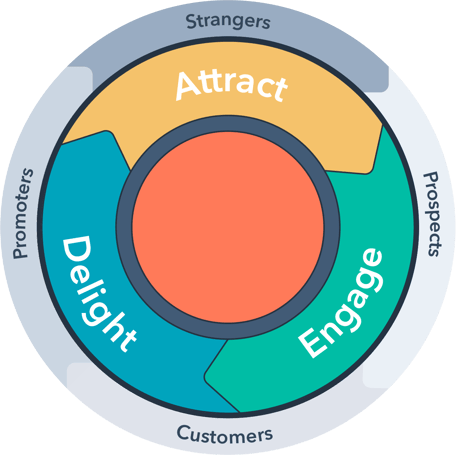
![Access Now: Customer Support Strategy Template [Free Tool]](https://no-cache.hubspot.com/cta/default/53/7dff7d77-3a4c-40ea-a4c8-376b827a83ab.png)
Customer Delight Definition
Customer Delight vs. Customer Satisfaction
How to Delight Your Customers
Customer Delight Examples
Customer Delight Definition
Who is responsible for delighting prospects and customers?
Customer Delight vs. Customer Satisfaction
Customer Delight Index
How to Delight Your Customers
1. Solve (potential and current) customers' problems.
2. Be timely.
3. Solve for the present and the future.
4. Help customers succeed.
5. Listen to customer feedback.
6. Be enthusiastic.
7. Be unexpected.
8. Build a community.
Customer Delight Examples
1. HubSpot
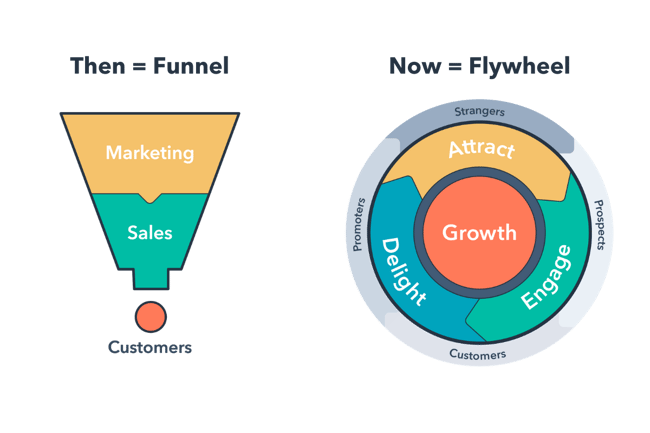
2. Patagonia
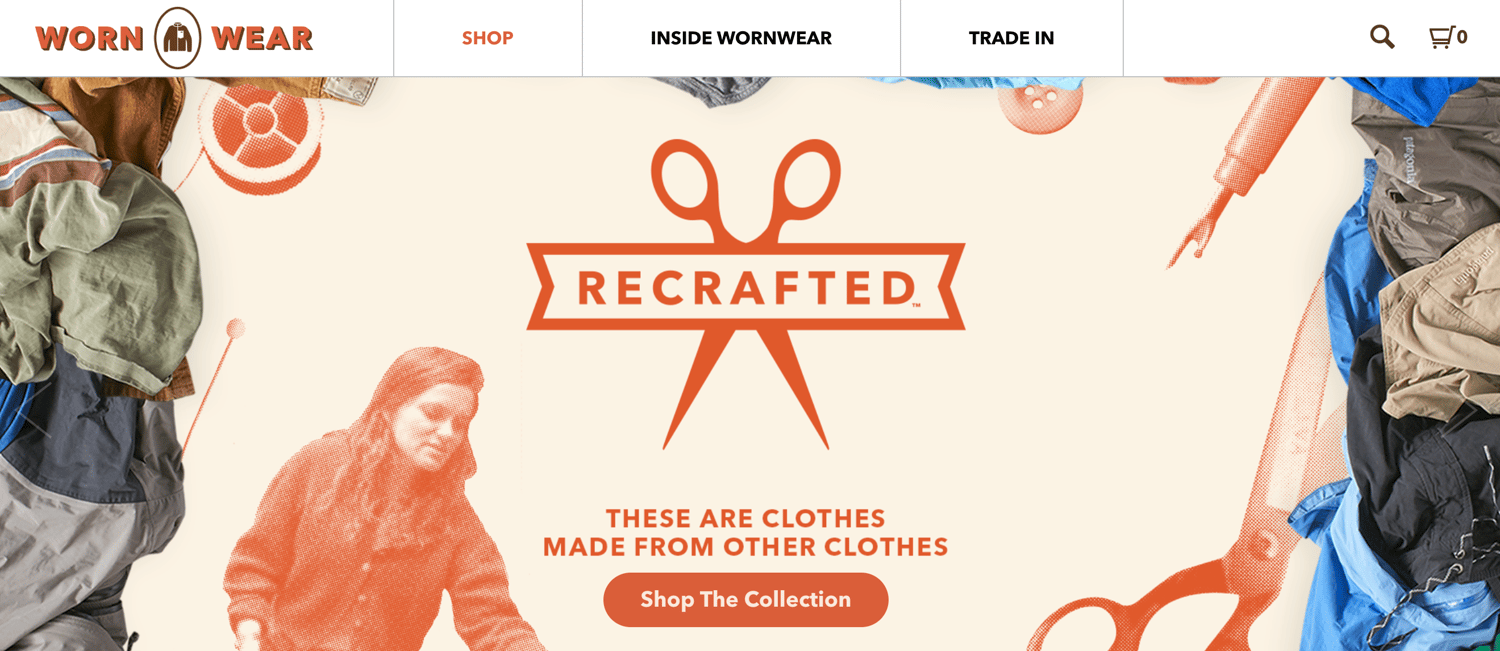
3. Sephora

4. Jetblue

Inside the popup, in hiding, was a real flight attendant speaking through a microphone with the customers about their feedback, comments, questions, and concerns.5. Chewy
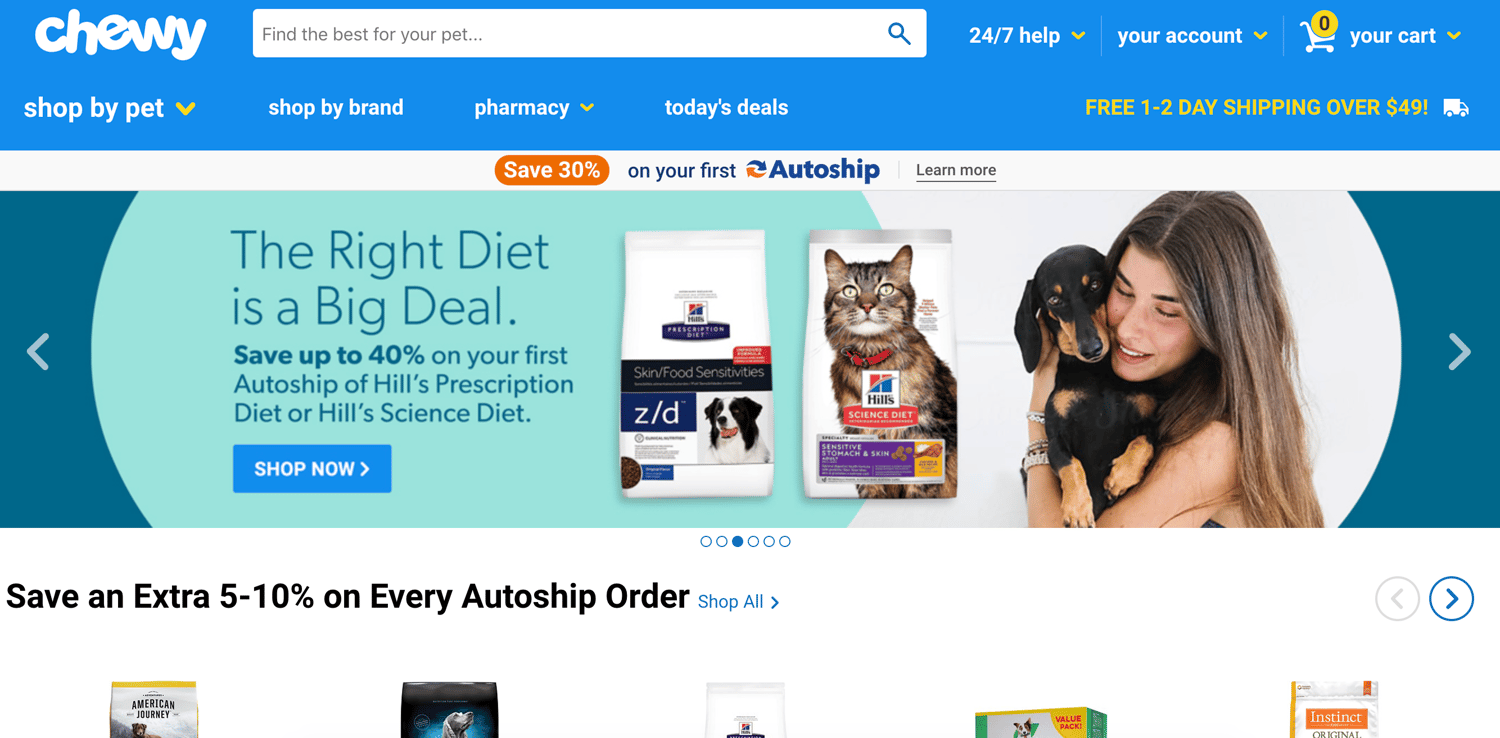
They go above-and-beyond with their direct customer interactions, even though they're a large-scale company. A number of customers who have been forced to cancel their Chewy subscriptions due to their pets passing away have reported receiving flowers and hand-written notes from employees sharing their condolences.Delight Your Customers to Grow Better
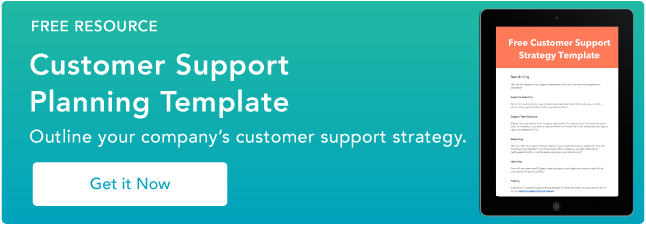

Originally published Mar 9, 2020 12:45:00 AM, updated October 29 2021
Which Of The Following Is Most Likely To Delight A Customer
Source: https://blog.hubspot.com/service/customer-delight
Posted by: davisalowely.blogspot.com

0 Response to "Which Of The Following Is Most Likely To Delight A Customer"
Post a Comment